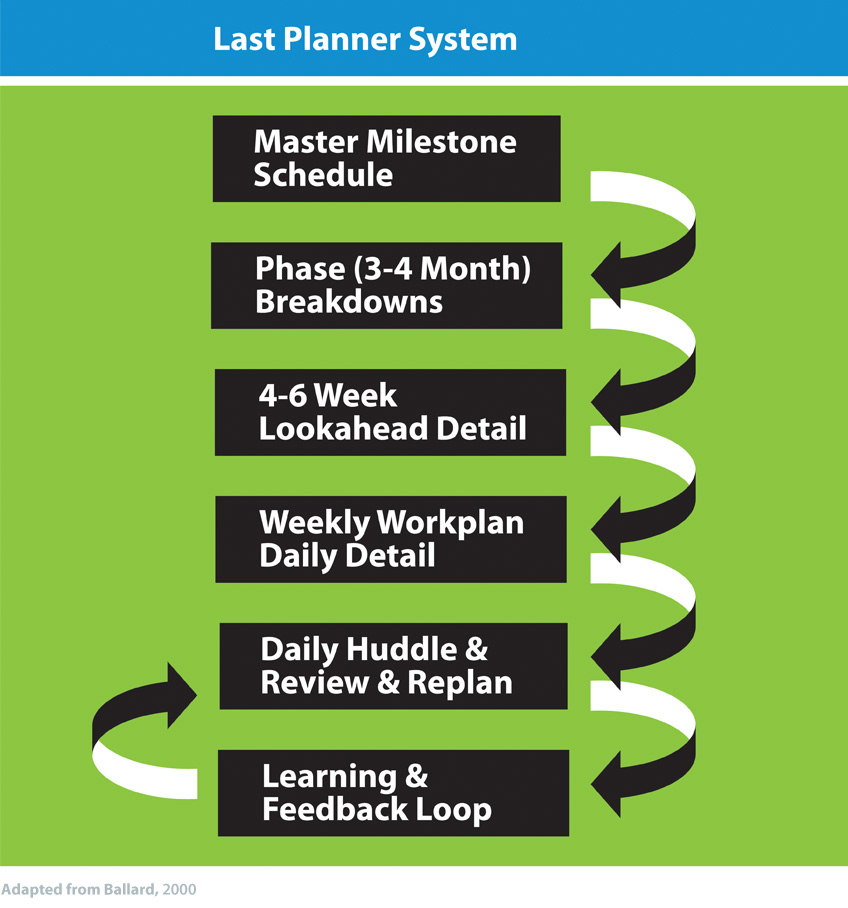Lean & Agile Construction have over 10 years experience in implementing Last Planner® System on construction projects across a number of sectors, dealing with diverse teams on projects of different scale and contexts. We bring expert knowledge to crew level planning and operations which will assist optimise production and coordination on your project.
Those experienced in construction project delivery acknowledge that Critical Path Method (CPM) and Project Evaluation & Review Technique (PERT) schedules don't contain requisite detail to counteract the variability that impacts the execution of tasks in the field. These tools have only served to increase the separation of planning activities from work execution activities. A key concept in Lean Construction is the provision of reliable workflow to the teams to reduce the uncertainty that arises from other trades not completing their work in time, delays caused by incomplete design, insufficient resources or the lack of materials or suitable equipment.

Last Planner System (LPS) is a planning and coordination technique that addresses these issues, and the ‘principles’ underlying LPS can be summarised as follows:
I. Plan in greater detail as you get closer to doing the work.
II. Produce plans collaboratively with those who will do the work.
III. Reveal and remove constraints on planned tasks as a team.
IV. Make and secure reliable promises.
V. Learn from breakdowns.
Using all functions of LPS as a complete system has lead to validated improvements in schedule alignment, a reduction in safety & quality issues, and consequential cost savings. It is proposed that a more complete introduction of LPS on construction projects could bring about a change in mind-set and ultimately overcome the cultural barriers to the new approaches to efficiency and production in construction. Such mind-set change is possible as LPS is a critical tool for enabling the delivery of better performance over time.
Last Planner® System in Design
The design process often lacks effective planning and control to minimise the effects of complexity and uncertainty, to ensure that the information available to complete design tasks is sufficient, and to reduce inconsistencies within construction documents.
Management of design projects suffer from the following identified issues:
- poor communication
- lack of adequate documentation
- deficient or missing input information
- unbalanced resource allocation
- lack of co-ordination between disciplines
- poor client interaction
- unrealistic expectations
- erratic decision making
Last Planner in Design introduces the importance of breaking down traditional large design document set deliverables into a map of information hand-offs and viewing resolution of decisions as milestones. The concepts of collaborative design planning are introduced and how LPS principles are adapted for the design phase and supported by concepts and tools such as Agile and Scrum.
Key outcomes are
- The principles of LPS can be applied to the Design/Development phases of a project.
- Elements of agile management and scrum framework can combine productively with LPS in design management.
- Successful application of these frameworks and principles can reduce design rework and improve collaboration.
- Metrics can be utilised for team feedback